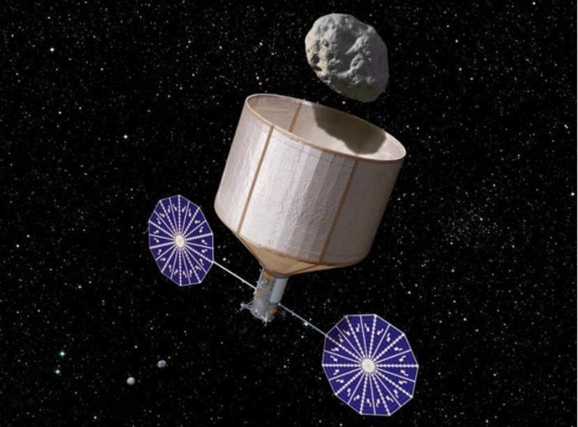NASA’s Next Plan For A Space Station Could Involve Pulling An Asteroid Into Lunar Orbit
This article is more than 2 years old
$2.6 billion can buy you a lot of things. 2.6 billion lottery tickets. 2,600 copies of Action Comics #1, if there were that many. Hell, you could probably get the President to go on record saying he’s a cyborg for that kind of money. And apparently, you can afford to pluck an asteroid from outer space as well.
A study from the Keck Institute for Space Studies (KISS), in cooperation with over 30 members of science institutions such as NASA, Caltech, and the Planetary Society, is being considered for approval by the White House Office of Science and Technology. The plan is to capture an asteroid and bring it into lunar orbit, and the reasons for doing so are plentiful.

I’ll summarize the plan as convincingly as possible. First, a near-Earth asteroid small enough to be captured needs to be identified, and then a large enough spacecraft needs to be built that has enough propulsion to jettison to our moon’s orbit. As if stopping the spin of an asteroid wasn’t enough, the actual asteroid-to-cislunar space could take from 6-10 years to be completed. And by then, scientists will definitely need to have our space program geared up and ready to send astronauts out there.
Assuming all this goes according to plan, the plan would initially be for astronauts to mine the asteroid for usable materials, like water perhaps, but the long-term goal would be to use this space rock, and others like it, as launching points for future space exploration. Eventually, the hope is to establish a base where teams would be able to construct spacecraft in space, using the resources found there.
It’s a lofty goal with exciting implications. Not so exciting will be all of the opposing arguments involved with manipulating asteroids and the possible fluctuations in gravitational pull. Also, I’m foreseeing other countries getting asteroid envy, and soon thereafter not being able to see the Moon due to the sheer number of asteroids bumbling around it. And sadly, this will be after advertisers get into the mix. Atari seems like a good place to start.












